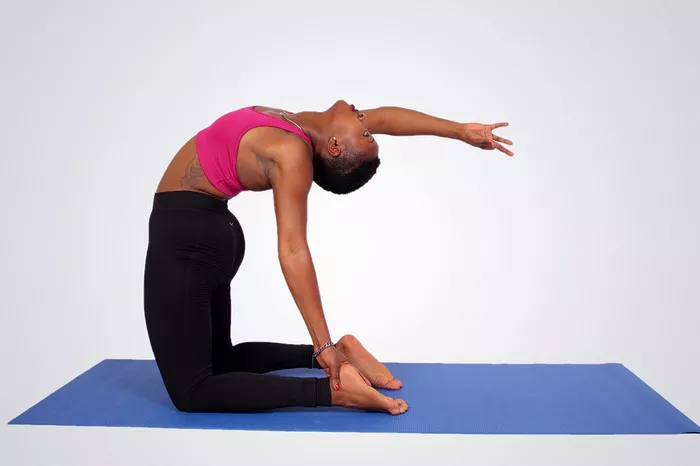The Bird Dog exercise is a staple in core training routines, renowned for its effectiveness in enhancing stability, balance, and overall core strength. This low-impact, full-body movement targets multiple muscle groups, including the abdominals, back, glutes, and shoulders. Originally developed by Dr. Stuart McGill, a professor of spine biomechanics, the Bird Dog is designed to improve lumbar stability and reduce lower back pain, making it a valuable addition to any fitness regimen.
Benefits of the Bird Dog Exercise
The Bird Dog exercise offers numerous benefits beyond just strengthening the core. Here are some of the key advantages:
1. Enhances Core Stability
The primary benefit of the Bird Dog exercise is the enhancement of core stability. By engaging both the deep and superficial muscles of the core, it provides a strong foundation for all types of movement, reducing the risk of injuries.
2. Improves Balance and Coordination
The Bird Dog requires a great deal of balance and coordination, especially when lifting opposite limbs simultaneously. This aspect of the exercise helps improve proprioception, which is the body’s ability to sense its position in space.
3. Reduces Lower Back Pain
For individuals suffering from lower back pain, the Bird Dog can be particularly beneficial. It strengthens the muscles around the spine, improving lumbar stability and alleviating discomfort.
4. Enhances Postural Control
Poor posture can lead to various musculoskeletal problems. The Bird Dog exercise helps in correcting postural imbalances by strengthening the muscles that support proper alignment.
5. Functional Fitness
The Bird Dog mimics movements required in daily activities and sports, making it a functional exercise that enhances overall physical performance.
Muscles Targeted by the Bird Dog Exercise
Understanding the muscle groups involved in the Bird Dog exercise can help you perform it more effectively. Here are the primary muscles targeted:
1. Core Muscles
The transverse abdominis, rectus abdominis, and obliques are deeply engaged to maintain stability and balance.
2. Back Muscles
The erector spinae, multifidus, and latissimus dorsi muscles work to stabilize the spine and extend the back.
3. Glutes
The gluteus maximus and gluteus medius are activated to lift and extend the leg, providing stability and strength to the lower body.
4. Shoulders and Arms
The deltoids and triceps are involved when extending the arm, contributing to upper body strength and stability.
Proper Technique: How to Perform the Bird Dog Exercise
Executing the Bird Dog exercise with proper form is crucial to reap its benefits and prevent injury. Here’s a step-by-step guide:
1. Starting Position
- Begin on your hands and knees, ensuring that your wrists are directly under your shoulders and your knees are under your hips. This position is known as the quadruped position.
- Keep your spine in a neutral position, with your head aligned with your spine. Avoid arching or rounding your back.
2. Engaging the Core
- Engage your core muscles by pulling your navel towards your spine. This helps stabilize your torso throughout the movement.
3. Movement Execution
- Slowly extend your right arm forward and your left leg backward simultaneously, maintaining a straight line from your fingertips to your toes. Your arm should be parallel to the floor, and your leg should be in line with your body.
- Hold this position for a few seconds, focusing on maintaining balance and stability. Avoid any excessive arching of your lower back.
- Return to the starting position and repeat the movement with your left arm and right leg.
4. Breathing
- Inhale as you extend your arm and leg, and exhale as you return to the starting position. Proper breathing helps maintain core engagement and stability.
5. Repetitions and Sets
- Perform 10-15 repetitions on each side for 2-3 sets. Adjust the number of repetitions and sets based on your fitness level and goals.
Common Mistakes to Avoid
To maximize the effectiveness of the Bird Dog exercise and avoid injury, be mindful of these common mistakes:
1. Arching the Lower Back
Excessive arching of the lower back can lead to strain and discomfort. Keep your spine neutral and engage your core throughout the movement.
2. Rotating the Hips
Avoid rotating your hips when lifting your arm and leg. Focus on keeping your hips level and stable.
3. Holding Breath
Breathing is crucial for maintaining core engagement and stability. Ensure you breathe steadily throughout the exercise.
4. Rushing the Movement
Perform the exercise slowly and with control. Rushing can compromise your form and reduce the effectiveness of the exercise.
5. Overextending the Limbs
Only lift your arm and leg to a level where you can maintain stability. Overextending can lead to imbalance and improper form.
Modifications and Variations
The Bird Dog exercise can be modified to suit different fitness levels and goals. Here are some variations and modifications:
1. Beginner Modification
If you find it challenging to lift both your arm and leg simultaneously, start by lifting only your arm or leg at a time. Gradually progress to lifting both as your balance and strength improve.
2. Advanced Variation: Bird Dog Plank
For a more challenging variation, perform the Bird Dog exercise from a plank position. Begin in a high plank with your hands under your shoulders and your body in a straight line. Lift your opposite arm and leg while maintaining a stable plank position.
3. Stability Ball Bird Dog
Adding a stability ball can increase the difficulty of the exercise by requiring greater balance. Place the stability ball under your hips and perform the Bird Dog as described. The instability of the ball will engage your core even more.
4. Resistance Band Bird Dog
Incorporate a resistance band to add resistance to the movement. Loop the band around your hand and foot, and perform the exercise as usual. The added resistance will intensify the workout for your muscles.
Integrating Bird Dog into Your Workout Routine
The Bird Dog exercise is versatile and can be integrated into various types of workout routines. Here are some ways to incorporate it:
1. As a Warm-Up
Use the Bird Dog exercise as part of your warm-up routine to activate your core and prepare your body for more intense exercises.
2. Core Workout
Include the Bird Dog in your core workout regimen. Pair it with other core exercises like planks, Russian twists, and leg raises for a comprehensive core strengthening session.
3. Functional Training
Incorporate the Bird Dog into functional training circuits to improve balance, coordination, and overall functional fitness.
4. Rehabilitation and Recovery
Use the Bird Dog as a rehabilitation exercise for lower back pain or as part of a recovery routine to maintain core stability without high impact.
Progression and Goal Setting
To continue progressing with the Bird Dog exercise, set specific goals and gradually increase the difficulty:
1. Increase Hold Time
As you become more comfortable with the exercise, increase the duration of the hold when extending your arm and leg. Start with a few seconds and work your way up to 20-30 seconds per hold.
2. Add More Sets
Gradually increase the number of sets you perform. Start with 2-3 sets and aim for 4-5 as you build strength and endurance.
3. Combine with Other Exercises
Combine the Bird Dog with other exercises in a superset or circuit format. For example, perform a set of Bird Dogs followed by a set of planks or push-ups.
Scientific Evidence Supporting the Bird Dog Exercise
Numerous studies support the efficacy of the Bird Dog exercise in enhancing core stability and reducing lower back pain. Research by Dr. Stuart McGill has shown that the Bird Dog, along with other core stability exercises, significantly improves lumbar spine stability and reduces the risk of lower back injuries.
A study published in the Journal of Strength and Conditioning Research found that core stability exercises, including the Bird Dog, effectively engage the deep core muscles, contributing to improved functional performance and injury prevention.
Another study in the Journal of Physical Therapy Science highlighted the Bird Dog’s role in reducing chronic lower back pain by strengthening the lumbar extensor muscles and improving overall spinal alignment.
Conclusion
The Bird Dog exercise is a powerful tool for enhancing core stability, balance, and overall strength. Its simplicity and effectiveness make it suitable for individuals of all fitness levels. By incorporating the Bird Dog into your regular workout routine and performing it with proper form, you can reap its numerous benefits, from improved posture to reduced lower back pain.
Whether you are a beginner looking to build a strong foundation or an advanced athlete aiming to enhance your functional fitness, the Bird Dog exercise is a valuable addition to your fitness arsenal. Remember to progress gradually, focus on maintaining proper form, and integrate it with other exercises for a comprehensive core training regimen. With consistency and dedication, the Bird Dog can help you achieve a stronger, more stable core and a healthier, pain-free back.





















